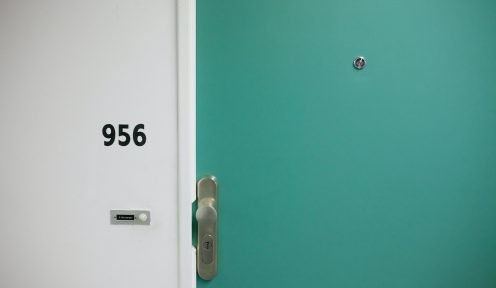
07.01.2022
Lawsuit for the execution of negotiable instruments
When does the lawsuit for the execution of negotiable instruments take place? Which is the competent Court? What are the advantages of this procedure? Which actions does the owner of a negotiable instrument have? What does the procedure involve? What is a preventive seizure? When can the seizure be lifted? How can the defendant react? How does the opposition to this kind of action work?
Do you have a bill of exchange, a check or a promissory note pending of payment after and its term has expired? If the answer is yes, Do you know that you can file a lawsuit for the execution of negotiable instruments, a fast and effective to satisfy your debt?
 Por
Osa Otero, Sandra
Por
Osa Otero, Sandra When is it appropriate to file a lawsuit for the execution of negotiable instruments?
The lawsuit for the execution of negotiable instruments is an alternative procedure to the ordinary and verbal ones. Unlike these, it is a judicial procedure that applies exclusively to cases of non-payment of a debt. This debt must be contained in a negotiable instrument. That is a bill of exchange, a check or a promissory note. Its purpose is to obtain payment of the outstanding debt. This is achieved by means of a demand for payment prior to the order of preventive seizure. It grants a fast and effective protection to the creditor. This is the main advantage of the exchange judgment.
Contacto No te quedes con la duda, contacta con nosotros. Estaremos encantados de atenderte y ofrecerte soluciones.Which is the competent Court?
The competent Court is the Court of first instance corresponding to the debtor’s domicile. In the case of plurality of debtors, the competent Court will be the domicile of any of them. The rules of express or tacit submission are not applicable in the exchange trial.
What actions does the creditor have?
The creditor can take two actions. He can exercise the direct action against the principal debtor. Likewise, he can exercise the action of return against any of the persons who have signed the bill of exchange.
What is the procedure?
It begins with a succinct demand accompanied by the negotiable instrument. Once the demand is filed before the competent body, it proceeds to the formal control of the title. If the negotiable instrument complies with the requirements established by the LCCh (Bill of Exchange and Check Law), an order will be issued. This will dictate the payment request or the preventive seizure. The defendant is granted a term of 10 days to make the payment after the pronouncement of the Order.
If the bill of exchange does not comply with the requirements established by law, the claim is inadmissible. In this case, the plaintiff may appeal in reconsideration before the same court.
What is the preventive seizure?
The preventive seizure serves as a precautionary measure, it has the objective of guaranteeing the effectiveness of the Order. Therefore, to ensure the payment of the negotiable instrument.
The plaintiff can indicate the specific assets of the defendant to be seized. The seizure of the assets must correspond to the amount of the debt. However, the defendant may oppose the attachment and request its lifting in the specific cases contemplated in the law.
When does the lifting of the lien proceed?
The seizure can be lifted in two cases. First, if the debtor denies the authenticity of his signature. Secondly, if he alleges absolute lack of representation. If the defendant wants to request the release of the seizure, he must appear within 5 days from the date of the request for payment. He can appear on his own or through a lawyer and attorney.
Depending on the circumstances of the case and the documents provided, the courts may lift the garnishments. There are a number of cases in which the garnishment cannot be lifted. In the event that a registered broker has intervened in the acceptance. Also, if the signature of the debtor has been made in the presence of a Notary. The same applies if the debtor has acknowledged his signature judicially or in a public document.

Si te ha interesado este artículo no dudes en leer:
The bills of exchange actions for non-acceptance and non-payment.
What are the options available to the defendant in a lawsuit for the execution of negotiable instruments?
The defendant can act in three ways. He can proceed to the delivery of the sum demanded accompanied by a voucher. This payment is made in favor of the creditor, and once it has been made, the procedure is terminated. Any costs incurred will be borne by the debtor. On the other hand, the passivity of the defendant is contemplated. That is to say, when the defendant does not make the payment or file an opposition claim within the established 10 days. This will lead to the judicial execution for the amounts claimed or the seizure of assets. Finally, the defendant may oppose the claim.
How the opposition to the lawsuit for the execution of negotiable instruments works?
As mentioned above, the plaintiff may oppose the claim. For this purpose, he must file the opposition claim within 10 days following the day in which the payment was requested. In which case, he requires the assistance of a lawyer and a solicitor. The answer to the claim must include the causes or grounds for opposition. Article 67 of the LCCh sets forth the exceptions to the exercise of the exchange action.
There are three different types of exceptions: negotiable instrument’s exceptions, extra-negotiable instrument’s exceptions and procedural exceptions. The negotiable instrument’s and extra-negotiable instrument’s exceptions are material exceptions. They are alleged against the application of the substantive rule. The lack of validity of the exchange instrument or the lack of standing on the part of the creditor are exchange exceptions. The extra-exchange exceptions consist of exceptions based on the personal relations of the debtor with the holder of the exchange instrument. Procedural exceptions are allegations that are formulated under a procedural rule.
Once the opposition claim has been filed, the clerk of the Court will inform the creditor. The creditor will be given 10 days to contest it in writing. The parties may request the holding of a hearing, in the absence of such request, it will be resolved without further proceedings. Finally, within 10 days the court will issue a ruling on the opposition.
Conclusion
As it has been stated, the lawsuit for the execution of negotiable instruments is the most advisable procedure to claim a credit included in an exchange title. With the claim for payment as the main tool and the preventive seizure as a precautionary measure. It becomes the most effective solution for this type of debts.
If this article has been of interest, we also suggest you to read the following article published on our website:












